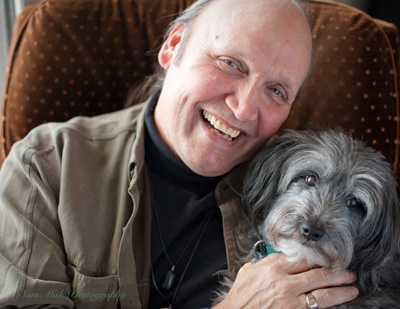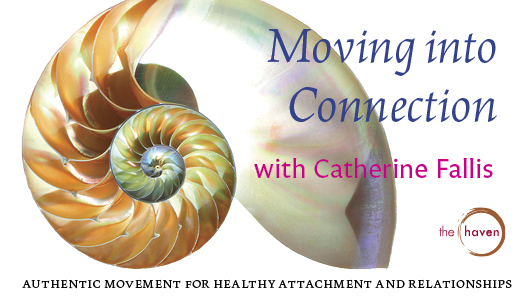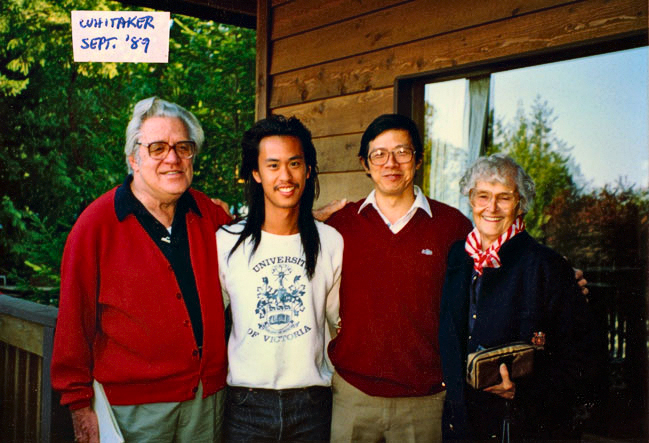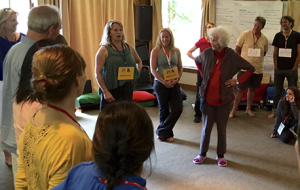Befriending Conflict: A Process Oriented Approach
By David Hatfield. David is leading A Process Oriented Approach To Conflict, June 27–30, 2019.
Like many Canadians (and I do mean many!), I grew up in a family system that was largely conflict avoidant. As the fourth of five children I recall watching my older siblings and parents move away from each other when the air got prickly with static between them. On occasion, I would hear a raised voice, but in my family this was a signal that someone was super agitated, and as a family that didn’t know how to welcome and work with such agitation, it would quickly recede into a cool silence, and occasionally a slammed door. As a child and youth, I really had little role modeling in how older people worked through the differences that are simply part of life for us all. It is poignant, conspicuous and troubling that our mainstream public education system does not include generous and consistent content in emotional intelligence, neurobiology and conflict resolution methods. It has become a calling for me to respond to this omission.
Fast forward to winter 2019. After facilitating the first day of a two-day training in process-oriented approaches to working with conflict in Vancouver, I was just starting my twenty-minute bike ride home. As I turned onto a busier street, I heard what sounded like a man’s voice yelling, “You almost hit me!” I pulled over to the curb and saw two parked cars back to front, with the male driver of each standing, holding onto their open driver’s side doors, yelling at each other. The second lane of this street was now backed up with cars not moving as those closest to the scene could see and hear a confrontation and were not coming any closer.
This is a classic conflict scene: a sudden and unexpected polarization emerges through two opposing, emotionally charged roles, and many of those present go into flight, fight or freeze response. With everyone involved being emotionally charged, the scene is characterized by a limited neurobiological capacity for awareness and choice. The presence of someone who can support all sides and facilitate awareness in conflict is an invaluable gift.
Before I consciously knew it, my body was walking towards them: I was engaging.
About four or five minutes later, I was back on my bike and checking myself. I noted my pulse rate, breathing and body temperature. I was both surprised and not surprised to find that I was operating in a normal and uncharged state. I was present to the road and traffic and not needing to replay the events of the five minutes I’d spent with those men. It was another measure of my learning journey with conflict.
When I got home I assessed how I had applied my process-oriented training. A process-oriented approach to conflict comes from Process-Oriented Psychology or Process Work. Founded by Dr. Arnold Mindell and other in the 1980s, Process Work is an awareness-based paradigm and practice that focuses on individual and collective change. Mindell began researching illness as a meaningful expression of the unconscious mind and began to develop new methods of working with areas of life that we experience as problematic or painful. Process Work believes that physical symptoms, relationship conflicts, and social tensions, when approached with curiosity and respect, can lead to new information that is vital for our personal and collective growth and health. With its roots in Jungian psychology, physics, and the Taoist principle of following nature, Process Work believes that the solution to a problem is contained within the disturbance itself. Thus, Process Work has come to be very interested in conflict psychology at personal, interpersonal and collective levels.
An important feeling attitude in Process Work is what Mindell calls deep democracy. In deep democracy, all aspects of an individual process, a relationship, or a group field, are invited, given a voice and heard. In particular, aspects of self and groups that are less known and/or more marginalized are invited and supported. Only by knowing all aspects or sides of an issue can we unfold it more fully, understand it more holistically, and in doing so find insights, and learnings that can bring growth, transformation and conflict resolutions.
During my engagement with the street conflict, I was noting what I saw as the intended (yelling) and unintended signals (hanging on the car doors) of the two men. The words were saying “We’re fighting” but their bodies were saying “I’m not willing to go further.” Believing from these signals that this conflict was already at its height, I had stepped into the scene saying, “Hey what is happening here? You guys are really upset.” I turned to one of them and he said, “He cut me off, nearly hit me!” I took his side and said, “People should never cut you off. It’s so dangerous. I’m glad you are okay.” I turned to the other and he said, “He called me names.” I took his side and said “He did? He shouldn’t have done that. That is really serious!” The practice of taking and valuing all sides is called deep democracy and is a foundation of Process Work.
With their reporting to me done, the two began to repeat their accusations of each other. This repetition is also a signal, called cycling. It typically accompanies a moment when people are at the limit of their identity: they don’t have access to a different way of being, and in essence, are stuck. In this case, it might have been the reason why they didn’t just get back in their cars and leave: they literally didn’t know how to do so, in that conflict context. As a long time leader in masculinity work, I also know that due to male socialization, the side of men that can disengage from direct challenge is marginalized and needs support to emerge.
When people are mired in cycling, a process facilitator offers interventions to help people experience themselves in new ways. And as always, the process facilitator is not interested in controlling or dictating the flow. Rather they offer suggestions, ideas and/or role modeling, but always watch and respect the feedback or response of people as the indicator of the process itself.
Assuming I was working with two men stuck in the need to not back down, I asked one of them where he’d been going when this all happened. He said “I’m picking up dinner for my family, from that place,” and gestured across the street. I said, “Well go feed your family, man, go get that food. Things are done here. You’ve been heard.” He nodded and started off to the restaurant. This picking up of my suggestion was positive feedback, indicating that something about the family dinner was now more important than the conflict.
My intervention spoke to both his human need to be heard and validated, and his own intention about family dinner. It was intended to bring him back to a wider awareness of his context, and to help disrupt the now unhelpful cycling dynamic. With him leaving, the other man calmed. I waved the traffic through to get them moving and also create a physical barrier between the two men in case they got going at each other again.
It would seem that these two men had little investment in getting to know each other, but did want to be heard.
For the moment, we’d found a temporary resolution among strangers with little relationship investment in each other. Had we not been on the street and strangers to each other, I would have liked to have kept going into other aspects of the scene. We could have explored the likely shared experience of fear about the near car accident. And also, how male gender role socialization had played its part in the escalation and what I saw as each man’s inability to disengage from the polarity they were in. I have little doubt that given the chance to further explore their signals and expressions, we would have accessed the beautiful gifts inherent in conflict: insights, new information and shifts in relationship.
I use this rather extraordinary example for a few reasons. But first and foremost, it is not to suggest that facilitating street conflicts is the intended or expected outcome for those attending my trainings! It is a good illustration of how signals in a conflict can be tracked and facilitated in any of our roles in life, as parents and caregivers, team leaders and HR managers, counselors, mediators and of course, in all of our relationships. The tools, awareness and interventions I used are the same ones I use in my work with couples, families or organizations, as conflict has so many universal patterns and properties. I hope this example might also stir some hopefulness in others who, like myself, grew up with few tools or role models for constructively engaging with conflict, that such skills and confidence can be developed!
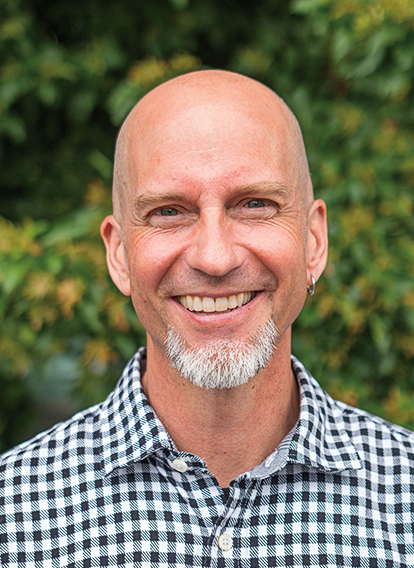
Conflict needn’t remain a scary or hopeless state. Process Work seeks to befriend conflict by sitting in the fire together at times in order to gain access to the information, learning, shifts in relationship and resolutions that are contained within conflict itself. In considering this moment in culture and history, it seems clear to me that a lot of historical and current conflicts require our respect, curiosity and attention in meeting the challenges of this time. Come join me in building our individual and collective ability to read signals, follow process and relieve tensions in ourselves, our relationships, organizations and our world.
********************************
David Hatfield M.A., M.Ed.is a consultant and process facilitator specializing in masculinity, conflict and vocal improvisation. His work has been contracted nationally and internationally since 1997.
Find out more and register for A Process Oriented Approach To Conflict, June 27–30, 2019.
Did you enjoy your read? Get bi-monthly updates straight to your inbox. That’s right, just one email every two weeks with a collection of great new content, plus an invitation to contribute too!




